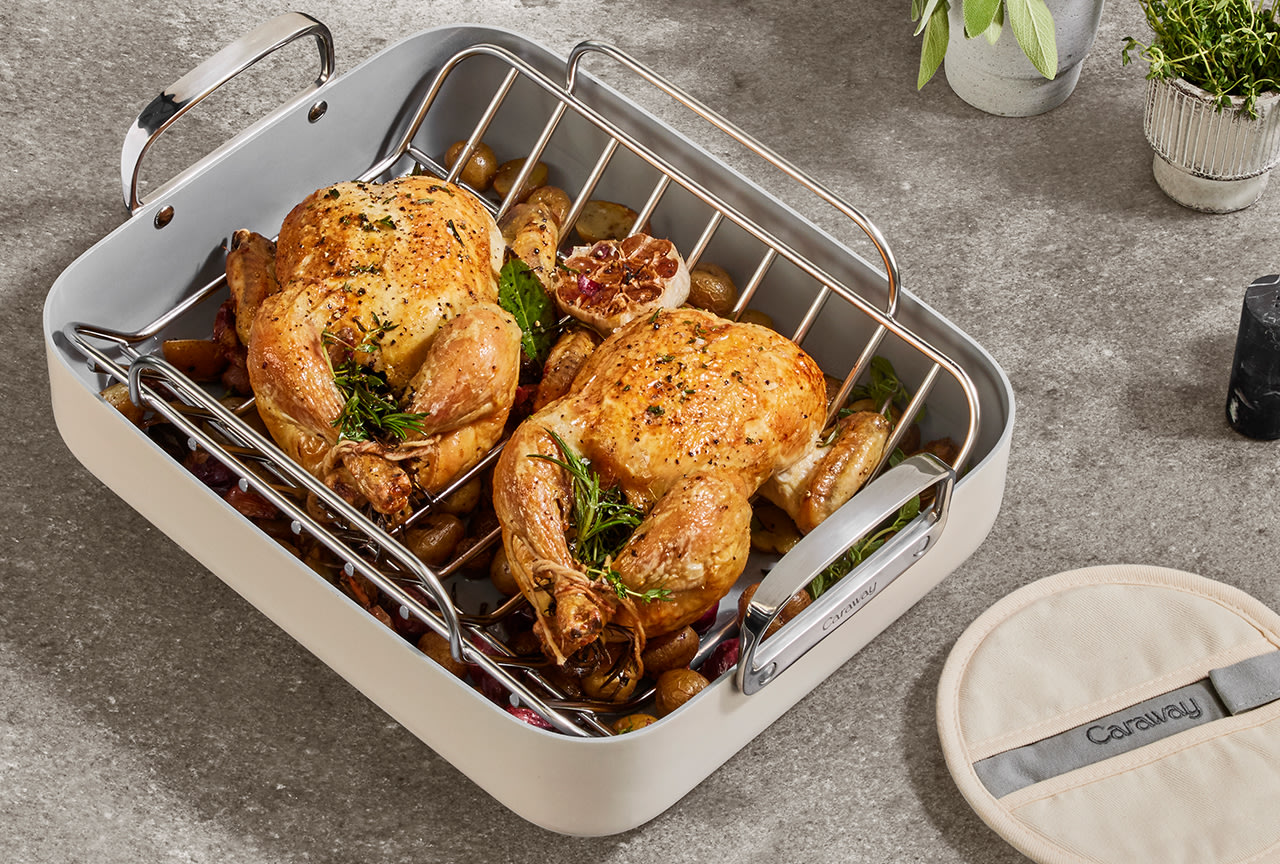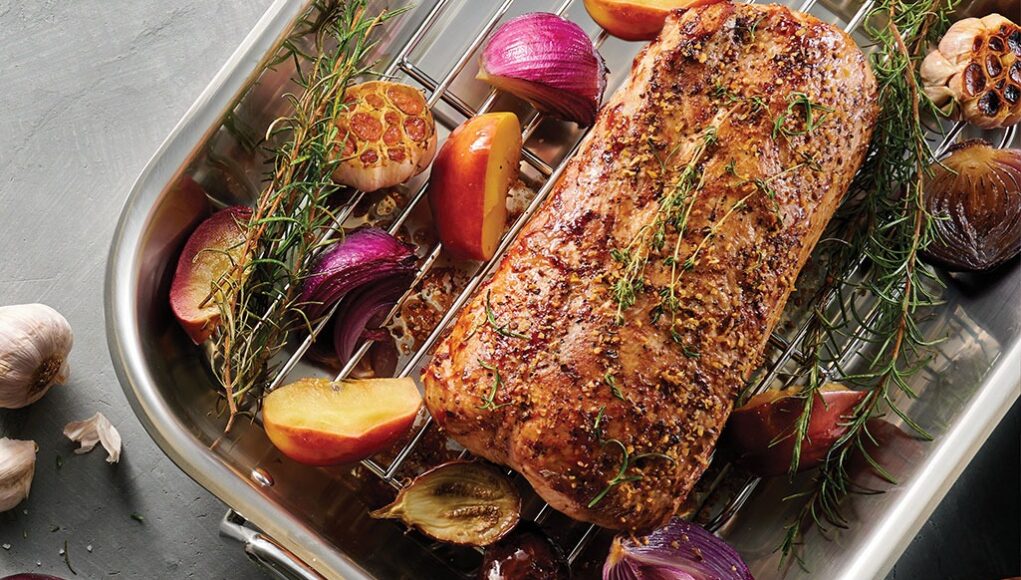The world of cooking is filled with a myriad of tools and gadgets, each designed to make the culinary experience more enjoyable and efficient. One such essential tool is the roasting pan. To equip your kitchen with smart technology, a roasting pan is not just any purchase; it’s a terrific investment in delicious meals and memorable gatherings. But what exactly is a roasting pan, and why is it so valued in the culinary world?

Understanding the Basics of a Roasting Pan
At its core, a roasting pan is a large, rectangular pan designed primarily for roasting meats, especially chicken, turkey, and beef. Its significant depth allows for the collection of drippings, which can be used to make savory gravies and sauces. The pan usually comes with a rack that elevates the meat, allowing hot air to circulate evenly around it, ensuring a crispy exterior and juicy interior.

Why Every Kitchen Needs a Roasting Pan
Whether you’re an amateur chef or a seasoned cook, a roasting pan is a kitchen staple. Here’s why:
1. Versatility in Cooking
A roasting pan isn’t just for roasting meats. Its tremendous size and durability make it perfect for roasting vegetables, baking lasagnas, casseroles, and even large batches of brownies.
2. Durability and Longevity
Most roasting pans are made from stainless steel or heavy-duty aluminum, ensuring they can withstand high temperatures and years of use. When cared for properly, a good roasting pan can last a lifetime.
3. Enhanced Flavor
The rack in a roasting pan allows the meat to be elevated, ensuring even cooking and preventing the meat from sitting in its juices. This results in a perfectly crisp exterior and a moist, flavorful interior.

Features to Look for in a Roasting Pan
When shopping for a roasting pan, consider the following features:
1. Material
Stainless steel is the most popular choice for roasting pans because of its durability and non-reactive nature. However, cast iron and aluminum pans are also excellent choices, each offering unique benefits.
2. Size
Choose a size that fits your oven and meets your cooking needs. A larger pan is versatile but ensure it doesn’t overcrowd your oven, which can affect cooking times and temperatures.
3. Handles
Sturdy handles are crucial for safely lifting and transferring heavy roasts. Look for pans with riveted or welded handles for added security.
How to Use a Roasting Pan
Using a roasting pan is straightforward, but a few steps can enhance your roasting experience:
1. Preheat Your Oven
Ensure your oven is preheated to the desired temperature before placing your food in the roasting pan.
2. Prepare the Pan
If your pan comes with a rack, spray it with cooking spray to prevent the meat from sticking. Place the rack inside the pan.
3. Season Your Meat
Season your meat or vegetables generously with spices, herbs, and oils.
4. Roast to Perfection
Place your seasoned meat on the rack and roast according to your recipe’s instructions. Remember to baste periodically to keep the meat moist.
Cleaning and Maintenance Tips
Proper care will ensure your roasting pan remains in excellent condition for years:
1. Avoid Harsh Chemicals
Use mild soap and warm water for cleaning. Avoid abrasive scrubbers that can damage the pan’s surface.
2. Soak Stubborn Stains
If there are stubborn stains or stuck-on food, soak the pan in warm, soapy water for a few hours before scrubbing.
3. Dry Immediately
Dry your pan immediately after washing to prevent water spots and rust, especially if its made of cast iron.
Additional Uses for a Roasting Pan
Besides roasting meats and vegetables, a roasting pan has many other uses:
1. Large Baking
Need to bake a large cake or batch of brownies? Your roasting pan can double as a baking dish.
2. One-Pot Meals
Create entire meals in your roasting pan, from lasagna to casseroles. Its large size makes it perfect for feeding a crowd.
3. Water Bath
Use your roasting pan as a water bath for baking delicate foods like custards and cheesecakes.
Comparing Roasting Pans to Other Cookware
Comparing a roasting pan to other kitchen tools can help you understand its unique features and benefits:
1. Roasting Pan vs. Baking Sheet
While both can be used for roasting, a roasting pan is deeper and usually comes with a rack, making it ideal for large roasts. A baking sheet is shallower and better suited for cookies and flatbreads.
2. Roasting Pan vs. Dutch Oven
A Dutch oven is versatile for braising and slow-cooking, but a roasting pans open design allows for better browning and crisping of meats.
Popular Brands of Roasting Pans
Several brands are renowned for their high-quality roasting pans:
1. All-Clad
Known for its tri-ply construction, All-Clad offers durable and efficient roasting pans that ensure even heat distribution.
2. Cuisinart
Cuisinart pans are popular for their affordability and versatile designs, often coming with racks and lifters.
3. Calphalon
Calphalon pans are praised for their non-stick surfaces and robust construction, making clean-up easier.
FAQs About Roasting Pans
1. What size roasting pan do I need?
The size of your roasting pan depends on the size of your oven and the amount of food you plan to cook. A medium-sized pan (16 inches) is typically sufficient for most home cooks.
2. Can I use my roasting pan on the stovetop?
Yes, many roasting pans can be used on the stovetop for making gravies or searing meats. However, ensure your pan is compatible with your stovetop type (gas, electric, induction).
3. Do I need to use the rack that comes with my roasting pan?
While the rack helps with even cooking and fat drainage, you can still roast without it, especially if you want the meat to sit in its juices.
For more information on roasting pans and their uses, visit this comprehensive guide to roasting pans.
Enhance Your Culinary Experience
A roasting pan is a valuable addition to any kitchen. Its versatility, durability, and ability to enhance the flavors of your meals make it a must-have tool for chicken lovers and cooks of all skill levels. Investing in a high-quality roasting pan ensures you can create delicious meals for years to come.
For more tips on chicken recipes and kitchen tools, check out our other articles on Rotisserie Chicken,Reheat Chicken and Fridge Time.
As an Amazon Associate, I earn from qualifying purchases.









